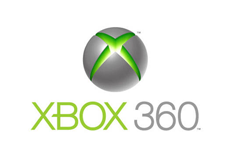By
Rob ScottDecember 4, 2012
A federal appeals court panel is skeptical whether streaming service Aereo has the right to retransmit broadcast television content without permission, but has yet to issue a decision. Three judges of the 2nd U.S. Circuit Court of Appeals appeared ready to reverse July’s lower court decision that reluctantly gave Aereo approval.
ABC, CBS, Fox and NBC are among the networks appealing the lower court judge’s decision that cited a Cablevision DVR case to allow Aereo to operate.
“Cablevision was a storage service, not a retransmission service,” says Bruce Keller, the networks’ attorney. “Aereo is a retransmission service by its own design. Without a license, it violates copyrights.” Paul Smith, another lawyer for the broadcasters, told the panel that the startup was trying to turn the Cablevision case “into a complete carte blanche where people can violate copyrights.”
Meanwhile, Aereo insists that it is complying with copyright laws and provides a legal, alternate platform for free TV broadcasts. Attorney R. David Hosp argued that Aereo lets customers “rent remotely located antennas to access content they could receive for free by installing the same equipment at home,” notes the Wall Street Journal.
“Aereo has grown from 100 users to more than 3,500 in the last year and has expanded from Apple devices such as the iPhone and iPad to devices including Windows computers,” reports WSJ. “It lets customers capture broadcasts from 29 local channels with subscriptions starting at $8 a month.”
By
Rob ScottDecember 3, 2012
To help get consumers interested in its 84-inch 4K Ultra HD TV priced near $25,000, Sony will loan buyers a 4K Ultra HD Video Player preloaded with 10 feature films in 4K format. According to the press release, the films include “The Amazing Spiderman,” “Total Recall,” “Salt,” “Bad Teacher,” “Bridge Over the River Kwai,” and “Taxi Driver,” among others.
The Ultra HD Video Player is designed to be updated with additional 4K titles and video clips, says the company. The Sony system includes the 84-inch 4K LED TV and an Xperia Tablet S that serves as a remote control.
“As a standalone unit, the Sony XBR-84X900 TV already upscales all video inputs, including the more than 7,000 Blu-ray Disc titles currently in distribution, to a near-4K resolution through the use of Sony’s proprietary 4K X-Reality PRO three-chip picture engine,” notes the press release.
“While there are other 4K Ultra HDTVs arriving this year — and we expect to see many more at CES in January — at the moment, this is the only one with a content delivery system in place, to go along with its upscaling chops, and the only studio pushing content at this res so far,” reports Engadget.
By
Rob ScottNovember 27, 2012
Samsung has announced that it will showcase an 85-inch Ultra High Definition TV at the Consumer Electronics Show in January. The set will be unveiled during a CES press conference on January 7 and then displayed at the Samsung booth (LVCC, Central Hall – 12004, 12527). The news comes after the TV was awarded a CES 2013 Best of Innovation award.
 “Samsung’s 85-inch UHD TV, the world’s largest commercialized UHD LED TV, boasts lifelike picture quality in ultra HD resolution with over 8 million pixels, four times the resolution of Full HD displays,” according to the company.
“Samsung’s 85-inch UHD TV, the world’s largest commercialized UHD LED TV, boasts lifelike picture quality in ultra HD resolution with over 8 million pixels, four times the resolution of Full HD displays,” according to the company.
“Samsung’s UHD TV uses an innovative enhanced dimming technology and a very high contrast ratio to deliver deep, real blacks and pure whites for greater detail and unmatched picture clarity. This new, cutting-edge TV also offers a powerful and dynamic range of sounds.”
The company has also been honored with a Best of Innovation award for its Smart TV Camera. “It adds Smart Interaction services, such as facial recognition and gesture control, to the company’s Smart TV sets that don’t come with a built-in camera,” reports Pocket-lint.
Stay tuned: The ETCentric reporting team will provide additional details on Samsung’s products live from CES.
By
Rob ScottNovember 26, 2012
Watching live television on an iPad currently has limited options. With a cable subscription, for example, users can stream Disney and ESPN shows. Alternatively, New York City viewers can opt for Aereo (but the networks are suing to shut it down). Enter Dyle, which just launched for Apple’s iOS devices. Dyle, with support from NBC, Fox and other top broadcast groups, has released a free TV app for iOS devices that uses broadcast signals to beam licensed programming to viewers. Continue reading Dyle Delivers Live TV to the Apple iPad: Ready for Prime Time?
By
Rob ScottDecember 15, 2011
We finally have progress on the CALM Act. After making its way through Capitol Hill, the act has formally been adopted in a ruling by the FCC, and will go into effect in December 2012.
 “Responding to years of complaints that the volume on commercials was much louder than that of the programming that the ads accompany, the FCC on Tuesday passed the Commercial Advertisement Loudness Mitigation Act (CALM) to make sure that the sound level is the same for commercials and news and entertainment programming,” reports the Los Angeles Times.
“Responding to years of complaints that the volume on commercials was much louder than that of the programming that the ads accompany, the FCC on Tuesday passed the Commercial Advertisement Loudness Mitigation Act (CALM) to make sure that the sound level is the same for commercials and news and entertainment programming,” reports the Los Angeles Times.
The act, which makes it so commercials will have to “remain in-step with the audio levels of scheduled programming,” comes a year after Congress passed commercial volume legislation and instructed the FCC to create enforcement rules.
“I cannot tell you how many hundreds of citizens have told me — personally, through emails and letters, at public hearings, even across the family dinner table — how obnoxiously intrusive they find loud commercials,” explained FCC Commissioner Michael J. Copps.
“We’re glad that consumers are finally going to get some relief from extra-loud TV ads,” said Parul P. Desai, policy counsel for Consumers Union. “People have been complaining about the volume of TV commercials for decades.”

 In a challenge to console makers, Valve has officially launched its “Big Picture Mode” for its cloud-gaming platform Steam, enabling users to play titles on their televisions by simply connecting their computers.
In a challenge to console makers, Valve has officially launched its “Big Picture Mode” for its cloud-gaming platform Steam, enabling users to play titles on their televisions by simply connecting their computers.


